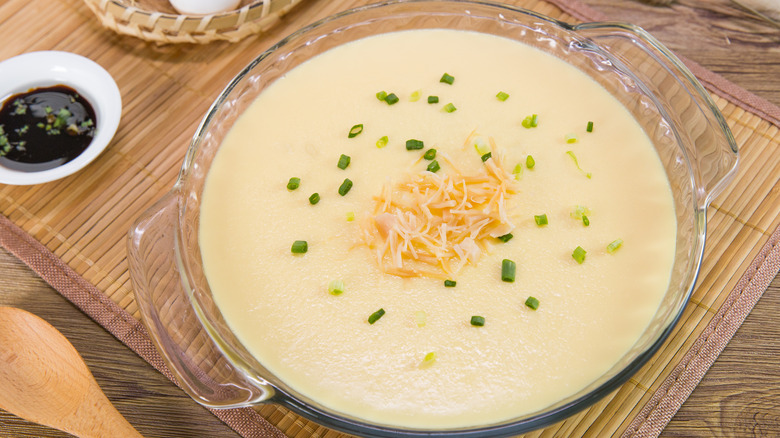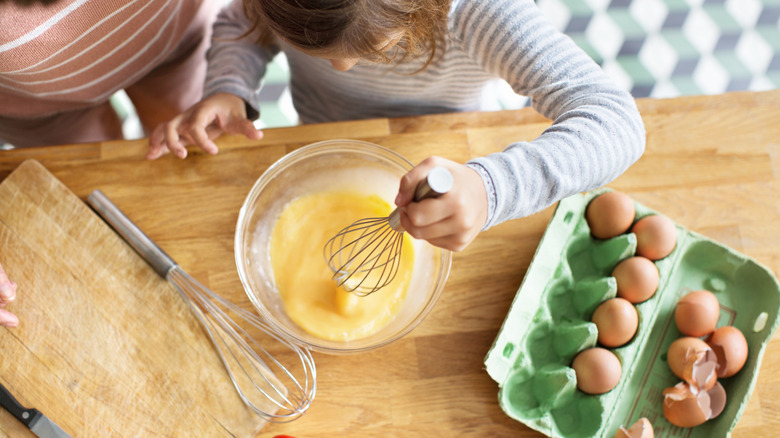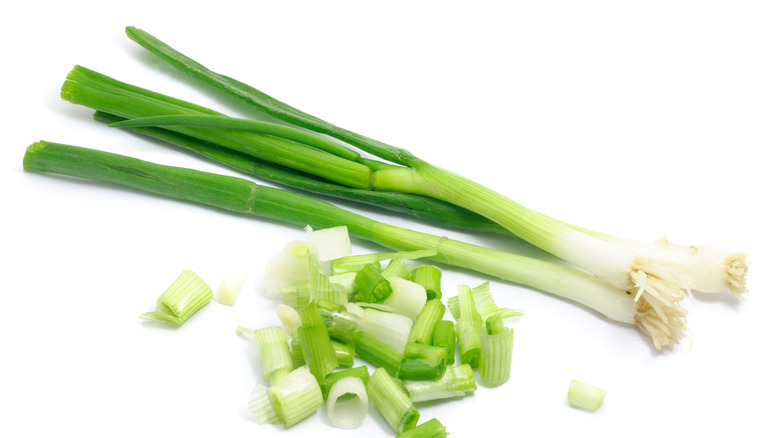What Is A Chinese Steamed Egg And How Is It Traditionally Eaten?
There are all sorts of fascinating dishes out in the world that you've probably never had before, and while they may seem odd at first glace, that's just because you're not used to them. Ultimately, don't let unfamiliarity keep you from trying new and delicious foods. With that in mind, it's time to explore the wonderful world of Chinese steamed eggs.
Eggs of all sorts (chicken or otherwise) are a classic comfort food in many different cultures, as science can help make clear. But while American readers probably grew up with scrambled or fried eggs, unless you're Chinese, you may not have had a bowl of Chinese steamed eggs. This smooth, velvety dish is something you should really try, though. That's because, much like scrambled eggs, they're part of a quick meal that's easy to pull off for even the most inexperienced cook. What's more, steamed eggs can easily become downright delicious.
The preparation process resembled scrambled eggs
Scrambling, frying, poaching, boiling — there are a lot of different egg preparations, but steaming is a bit of a new one to most Westerners. You may be wondering whether this differs from boiling eggs. After all, the difference between boiling and steaming arguably comes down to whether you're submerging something in the water or holding your ingredients above it. But in reality, the two methods are actually very different.
Chinese steamed eggs are initially prepared much like scrambled eggs: you break them apart, throw in seasonings such and salt and scallions, and then mix it all together. Chinese steamed egg recipes typically call for bouillion, soy sauce, and oil as well.
The next step is to dilute the eggs, slowly mixing in warm (not boiling) water until you see bubbles forming at the top of the mixture (similar to what happens when you whisk eggs for an omelet). Then, boil water in a wok or pan and suspend the egg mixture over the water with a steamer rack. From there, lower the heat to a simmer and let them cook for 7-10 minutes. Look for a firm but jiggly gelatin-like consistency.
Here's where you can get creative
From here, you can simply remove the bowl from the wok or pan and eat the steamed eggs straight up. You might not want to stop there, though, because this is an opportunity for you to get creative.
Typically, common additions at this point include scallions and white pepper, but (much like with scrambled eggs) there's no reason you can't add more ingredients to your own personal tastes. Think cheese, soy sauce, oyster sauce, other herbs and spices. Like other forms of eggs, steamed eggs take well to a shockingly wide array of add-ins. Only your imagination can limit you here.
The end product, is a smooth, velvety bowl of eggs with a uniform texture that's firm enough to be solid, but still soft enough to have a custard-like consistency. This texture gives it a smooth richness you don't generally find in other egg preparations. Try it some time and you may find that you want to make Chinese steamed eggs a regular part of your breakfast.


